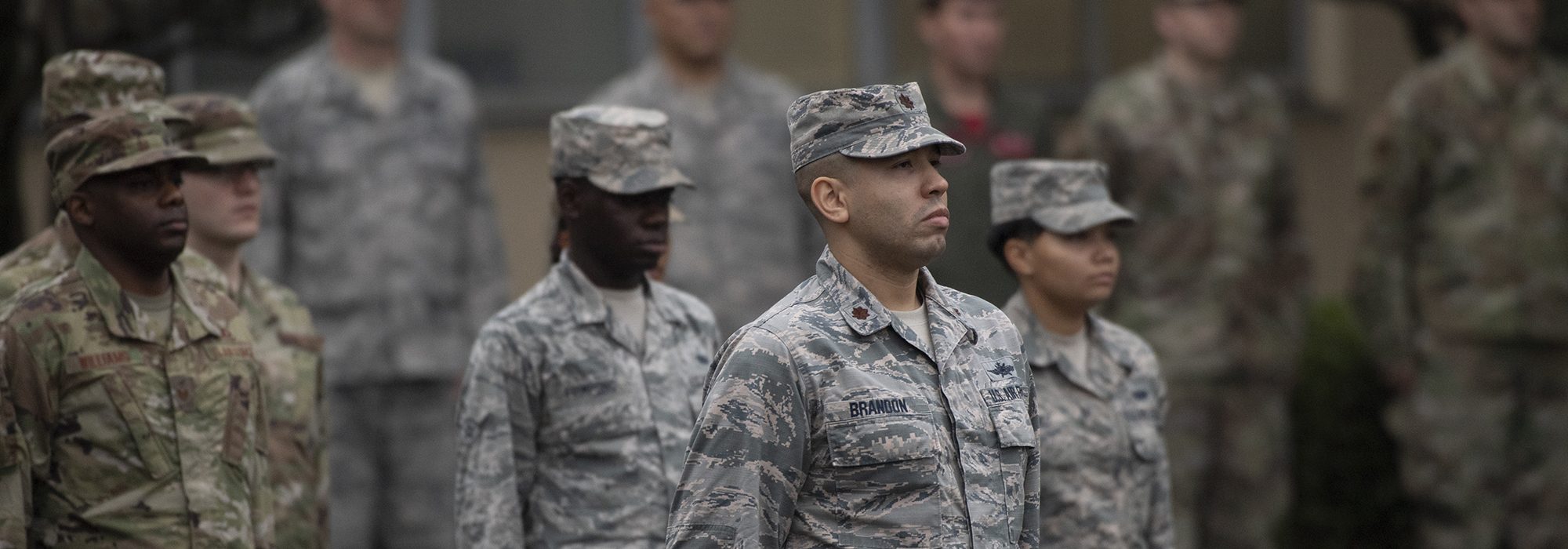Know of someone we should recognize? Send nominees to afmag@afa.org
As many restaurants closed their doors following nationwide stay-at-home orders, former Air Force and Air National Guard fighter pilot Sal Speziale chose a different path: He brought relief to those on the front lines, delivering free meals to first-responders and hospital workers from his Ciao Osteria restaurant in Centreville, Va. What began as a gift of 25 lunches to staff at Inova Fair Oaks Hospital expanded quickly with the help of a GoFundMe campaign that raised over $100,000 and spread to include meals for Inova Fairfax Hospital and Reston Hospital Center, as well as two area fire stations among other locations. The 1978 Air Force Academy grad and AFA member said he was witnessing “an awakening” of compassion and kindness in the midst of a national crisis. “It’s gonna be a different world when we wake up out of this, and a different country,” he said. “But I think it’ll be a better country.”

AFRL Materials and Manufacturing Directorate research scientists Ajit Roy and Nicholas Glavin are developing a wearable volatile organic compound (VOC) detector to protect maintainers working on aircraft fuel tanks. This device would detect the presence of VOCs such as jet fuel vapor. “When a molecule of the gas comes close to the surface of the film,” the device would send “an RF [radio frequency] signal” to let the maintainer know they’re in danger, he explained.

LeeAnn and Rich Murphy, former Security Forces Airmen, separated from the Air Force more than a decade ago but continue to help veterans recovering from the traumas of war. The Murphys volunteer with Veterans to Farmers, which helps train veterans for agricultural careers, and they also help vets find housing and support. LeeAnn, who grew up on a farm, is now the organization’s chairman and chief instructor, and has taught more than 200 veterans.

A C-17 and PACAF Airmen flew a 41-hour, 6,866- mile emergency mission across 12 time zones to bring the twins of U.S. Soldiers to Walter Reed National Military Medical Center in Bethesda, Md., for emergency neonatal care. The parents were in quarantine in South Korea when their twins were born in Daegu. Military hospitals in the region couldn’t provide the care they needed. “Sometimes it only takes five pounds of precious cargo to generate an all-hands-on-deck effort,” the command said.

By the time the Pentagon ordered cloth face coverings for everyone in military installations on April 5, Master Sgt. Robert Whisenhunt, the Aircrew Flight Equipment flight chief with the 97th Operation Support Squadron, had already devised a plan. “I came up with the idea on Friday, by Saturday we started experimenting” for effectiveness, he said. By Sunday, he had 45 volunteers helping to make masks for Airmen at Altus Air Force Base, Okla.

After spending 16 years as a professional ballerina, Virginia ANG Student Flight trainee Kristina Lorelli is trading in her pointe shoes for ABUs. Lorelli, who is in school and interning “at an auto shop,” has decided to pursue a career as an aircraft maintainer. “When I looked online for jobs in the Air National Guard and found Aircraft Maintenance, I thought—because I already have some background and I’ve always wanted to be a pilot—this would be good preliminary experience,” said Lorelli.

Second Lt. Jon Kent led a group of 60 Illinois ANG members supporting relief efforts at an emergency alternative health care facility set up in Chicago’s McCormick Place in response to the COVID-19 pandemic. “In just five short days, they were able to set up a system that they were unfamiliar with and greatly enhanced the capabilities of medical responders who will soon be using the facilities here,” said Kent. For most of the Guardsmen, it was their first state activation.

Airmen from the Alaska ANG’s 168th Wing are using 3D printing to manufacture “a functional respirator mask” so that N95 particulate respirators can be allocated for use by medical Airmen responding to the new coronavirus pandemic. “Some of our jobs demand PPE-like masks, but we’re trying not to use them,” said 168th Maintenance Group Commander Lt. Col. Jennifer Casillo. A team of Airmen led by 168th Aircraft Maintenance Squadron production superintendent Senior Master Sgt. Ray Allen scoured internet forums for potential designs and tested them before settling on one known as the “Montana Mask,” which was brainstormed by a neurosurgeon from the state. The washable, sterilizable design is made of plastic and uses replaceable paper filters. “Although not yet approved by any state or federal regulating institute, early testing shows the mask to be effective if fitted properly,” the Wing noted in a release. But the Wing isn’t alone. Airmen from across the country are using additive manufacturing to make personal protective equipment, such as “N95 style face masks” being made by the 388th Maintenance Group at Hill Air Force Base, Utah, and face shields being created by 57th Aircraft Maintenance Squadron maintainers from Nellis Air Force Base, Nev.

